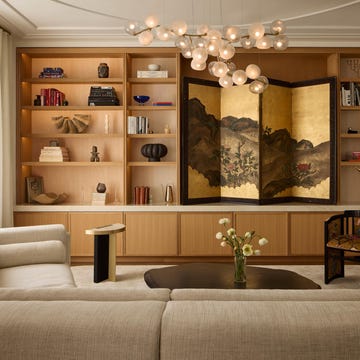A building that seems to grow like a tree towards the sky and where the residents form a mini-community: that was what visionary Spanish architect Javier Sáenz de Oíza had in mind with Torres Blancas, the brutalist icon in Madrid he built between 1964 and 1969.
‘We learned about it in our studies: it is a perfect example of Spanish organicism, a movement aiming to promote harmony between the human habitat and nature,’ says architect and designer Eduardo Tazón, who founded Studio Noju with his partner Antonio Mora.
On hearing that a two-storey apartment was available in the sought-after tower, they didn’t have to think twice. ‘De Oíza’s idea was to have shops, a swimming pool and offices in the building, too,’ says Eduardo.
What's everyone reading?
That vision has not fully materialised – the Torres Blancas now consists solely of apartments and office spaces – but this home still contains a dumbwaiter, which once connected the apartment to a restaurant on the ground floor.
The unique feature has been lovingly restored by Studio Noju, with Eduardo describing it as ‘a real talking point’. ‘Residents could order food to be delivered directly to their living room,’ he adds, ‘but it was only used for a few months – the idea was a bit too progressive for the 1960s.’
This quirk of de Oíza’s design is not the only original element to be retained and celebrated. ‘The layout was a perfect balance of curves and straight lines, so we wanted to stick with that,’ says Eduardo. ‘We even added extra curves, including in the furniture,’ he notes, pointing to the ‘Gogan’ sofa by Patricia Urquiola.
Its form mirrors the apartment’s two spacious semi-circular outdoor terraces, as well as the glass of the windows. The latter bathe this home in an amber light, especially at the end of the day. ‘That’s due to the façade of yellow glass blocks,’ says Eduardo. ‘We installed an oculus (a round window) in the kitchen and used reflective materials to enhance the light effect.’
It may be one of the newer additions to this home, but the peephole looks as if it has always been there. After all, the pair behind Studio Noju had to respectfully make their own mark on this property, despite their reverence for its creator. It’s a process they call contemporary preservation. ‘We wanted to pay tribute to the original project,’ explains Eduardo,‘but we also believe that a building should adapt to the times.’ studionoju.com

















